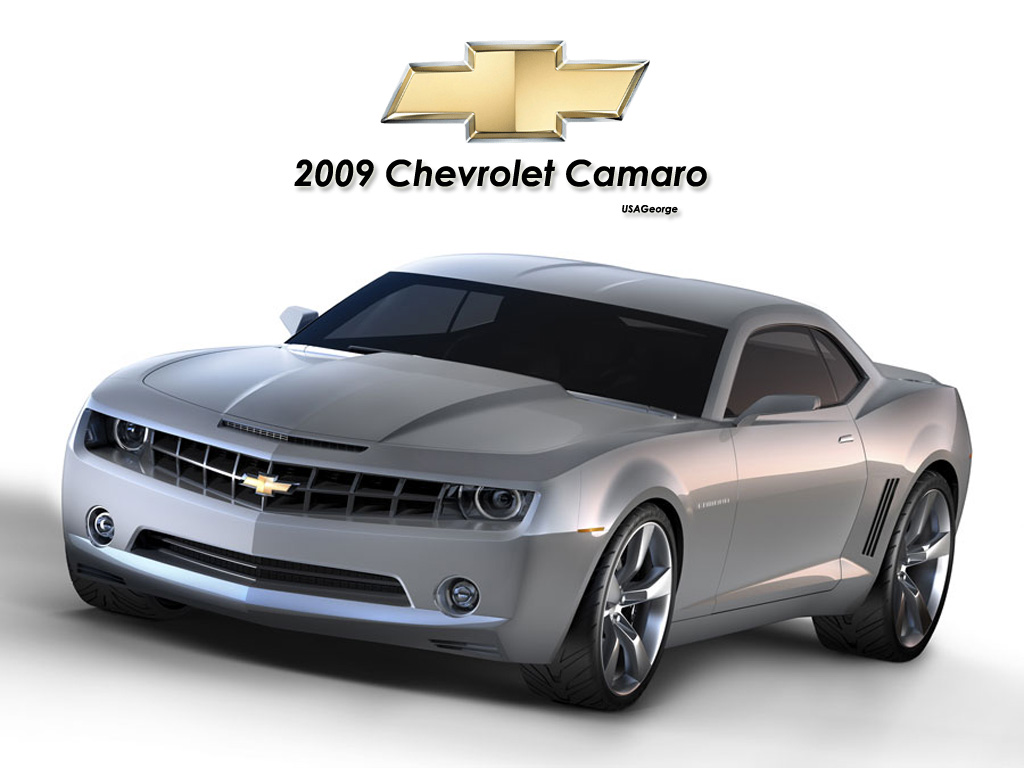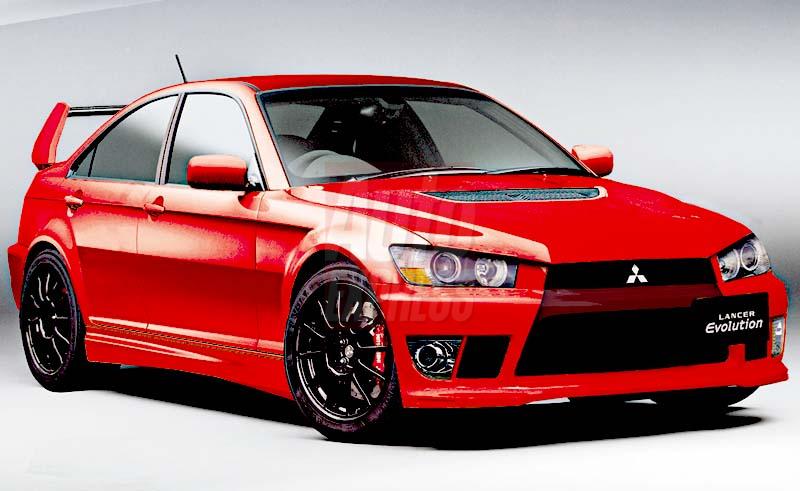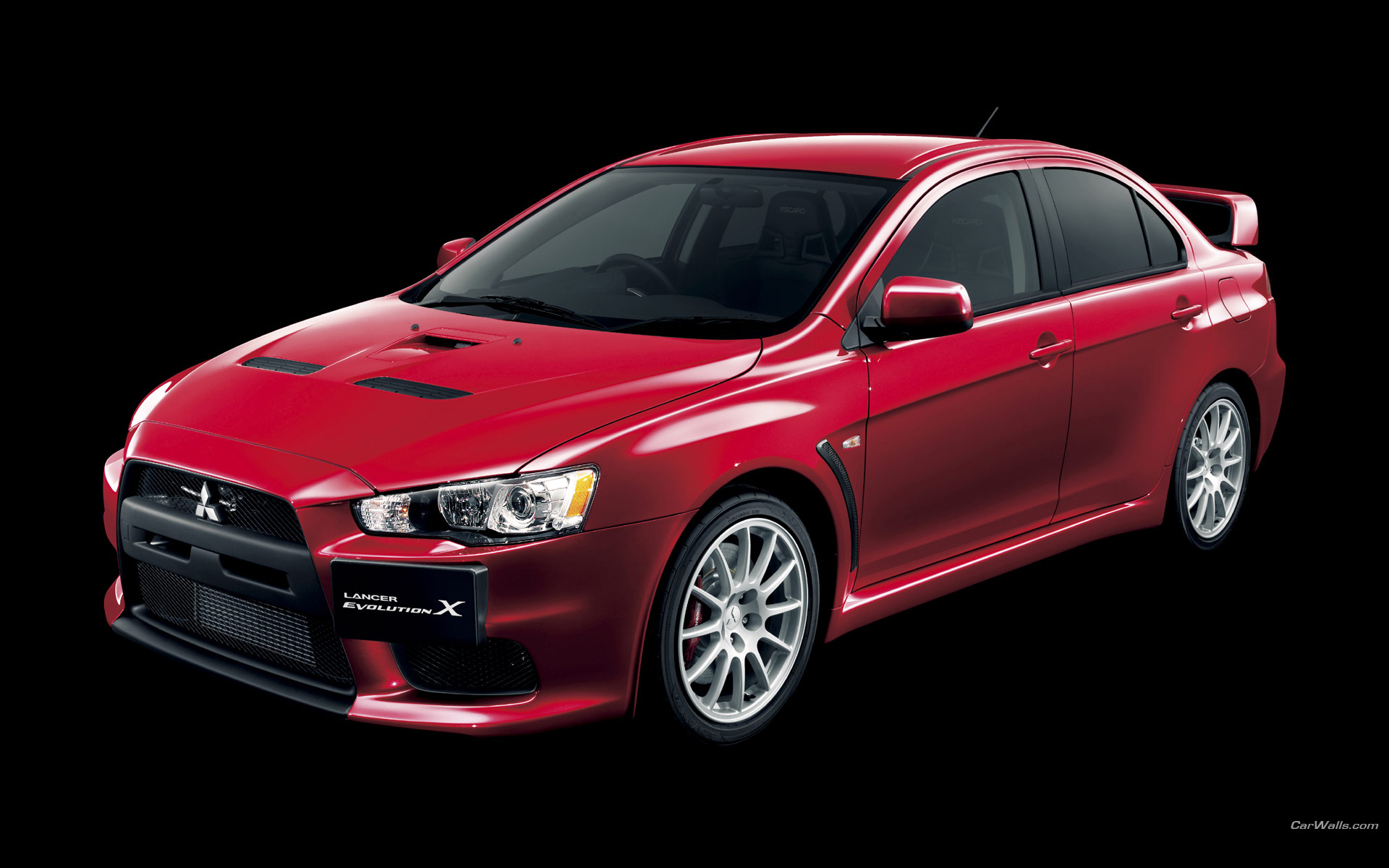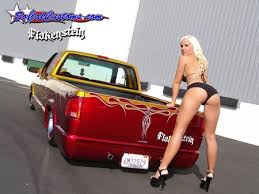|
|
|---|
Saturday, March 13, 2010
Friday, March 12, 2010
Thursday, March 11, 2010
Wednesday, March 10, 2010
Tuesday, March 9, 2010
Review: 2011 Jaguar XJ

Xynthia ripped into France merely hours after our arrival. Packing gale-force fury, the ruthless wind and rain battered the coast before moving inland with its crushing blow – sadly, it was the country's deadliest storm in more than a decade. While we were spared most of its rage, the countryside outside Paris was a soggy debris-laden mess – not exactly optimal conditions to test the latest flagship sedan from Jaguar.
Soldiering forth – and more intrigued than ever with the all-new saloon – we ignored the rain and spent a long day trekking around the drenched landscape with both the short- and long-wheelbase models. What makes this new XJ so different from its predecessors? Does its performance mirror its powerplants? And, what's up with that painted C-Pillar?
Originally launched in 1968, the Jaguar XJ was cast as the flagship of the British automaker's lineup. The new four-door saloon rolled into the public's eye with a straight-six engine and rear-wheel drive. Within a few years, a V12 would be fitted under the hood and the XJ would be sold as the world's only twelve-cylinder sedan. It was more than appropriate for Jaguar's jewel.
The Jaguar XJ went through several updates and a couple generations before the third-generation (or "Mark III") debuted in 1986. Ford Motor Company arrived as the brand's new owner shortly thereafter. The big American automaker updated the XJ's electrical system, improved the engine and taught the British company a few things about manufacturing... before selling the company in 2008.



Tata Motors Limited, a $16 billion multinational corporation headquartered in India, is the current owner of Jaguar – though you really wouldn't know it unless someone told you. The company purchased the traditional British automaker (in a sale that also included Land Rover) in the midst of the development of "Project X351" – better known as the fourth-generation XJ. Seemingly uninterrupted by the change at the helm, the design team pushed far beyond what would have been expected of an XJ successor, in both draft and engineering.
While most of the sedans in this segment are rather indiscernible in a crowd, the all-new 2011 Jaguar XJ draws mesmerized stares at first glance. Jaguar, intent on designing "beautiful fast cars" with "seductive designs," has delivered a sleek, fluid and contemporary shape – it isn't difficult to visualize that leaping black cat in its elongated silhouette.
Instantly recognizable as a Jaguar – thanks to the massive front grille – the XJ's figure doesn't overtly build-upon the styling of the XF, as many would have expected. Instead, it is a charge in a more cultured direction. Its lines are bold and deliberate, yet very graceful to the eye and wind (its drag coefficient is just 0.29). Artfully added bright accents, on the front fascia, quarter panel and rear valance, synthesize well with the chrome trim surrounding the cabin windows. Unlike the horizontal lights on the rear of the XF and XK, the rear LED lamps on the XJ boldly spill over the rear decklid. The license plate housing is dropped low – centered between two very prominent oval exhaust pipes.




The typical luxury automaker pens a new luxury sedan with a "standard" wheelbase. At some point during the development process, they draw it out to create a "long wheelbase" variant. Jaguar's team took a different approach as their initial design was the limousine – the standard wheelbase was drafted second. While many other long wheelbase vehicles appear mildly out of proportion, in Jaguar's case the stretch makes an already sexy XJ even more sensuous.
Of course, styling controversy swirls around that awkward painted gloss black C-Pillar (we remember it on the 1995 Dodge Intrepid). While it is nearly invisible on the darker paint shades, the inelegant accent cleaves through the graceful roof arch on the lighter cars. Jaguar says the blackened panel "reduces the visual weight of the pillars and gives the impression of an exotic floating roof." We get it, but we don't like it. The good news is that the XJ looks simply stunning in black– an exterior hue that effectively hides what we consider to be the only glaring misstep in the sedan's exterior cosmetics. We're also guessing that more than a few dealers will do a thrifty trade in offering body-color painted panels.

Matching the elegance of the exterior, the flagship's cabin is all about luxury, glitz and glamour. With the exception of the glass, switchgear and digital displays, leather covers nearly every surface – the Supersport even has a leather headliner. Those articles not swathed in natural hides are laminated in genuine wood, carbon fiber or plated in shiny chrome.
While there are plenty of "Jaguarisms" (the pop-up "JaguarDrive" selector in the middle console was expected), no-nonsense is the recurring theme. The all-leather three-spoke multifunction steering wheel is free of thumb detents and the wheel-mounted paddle shifters are nondescript (and barely visible to passengers). Jaguar made no attempt to hide those retro-cool oversize climate vents – thankfully.
Most obvious to the driver is the 12.3-inch high-definition "Virtual Instruments" gauge cluster. After booting with an image of Jaguar's "Leaper," the 614,400-pixel thin-film-transistor (TFT) screen defaults to a digitalized "analog" speedometer, tachometer, fuel level and water temperature graphic. That's only the beginning, as the multi-function screen also displays navigation, vehicle menus, gear selection, infotainment data and more at the touch of a button. We liked the virtual "torch effect" that highlights only pertinent numerals while ghosting the others and the red "hue" that envelops the cluster (complete with a small checkered flag) when running in sporty "dynamic" mode. The center cluster includes its own eight-inch WVGA color touchscreen that is tasked with managing climate control, audio functions, navigation and more.




One more thing... if the standard 600-watt audio system doesn't have your ears ringing, the 1,200-watt (15-channel) Bowers & Wilkins upgrade with 20 yellow-cone Kevlar speakers sprinkled throughout the cabin will surely send you straight to the otologist – yes, it sounds as good as it reads on paper.
Aluminum. That's that oft-repeated word when detailing the 2011 XJ's chassis and body panels. Jaguar used the lightweight alloy, plus magnesium and composites, to fabricate just about the entire structure (in case the question comes up on Jeopardy: the door and trunk hinges, and side-impact beams, are still steel). Most everything is assembled with aerospace-proven riveting and bonding technology – much like a modern aircraft. The resulting platform is not only reportedly the lightest in its class (saving 300 pounds over a steel equivalent), but the metallurgical properties of aluminum allow it to absorb the energy of impacts better than steel in a crash.
The extensive use of alloy helps kept mass at bay. Curb weight on the standard XJ is just 4,045 pounds, undercutting nearly everything in its segment by a least a few hundred pounds (the Mercedes-Benz S550 is nearly 600 pounds heavier). The new flagship XJ is even lighter than the smaller Jaguar XF – the XJ 5.0 model is lighter than its sibling by 22 pounds while the Supersport weighs 25 pounds less than the XF-R (SWB models, of course).

The suspension underpinnings aren't as radical as the platform supporting them, but they are sophisticated. Up front, Jaguar chose unequal length wishbones (with forged aluminum components to reduced unsprung mass) and coil springs – Jaguar has reverted back to a non-isolated front subframe on the new XJ after testing revealed it enhanced steering response and handling precision without consequences. The rear end features a subframe-mounted multi-link setup, with lightweight cast aluminum links and air springs to level the load. Active damping, originally introduced on the XK and XFR, automatically tailors settings to the road and driving conditions. Oversized disc brakes reside on each corner – the supercharged models are fitted with larger rotors all around and upgraded twin-piston aluminum floating calipers up front. The standard wheels are 19-inch cast alloy, while the forced-induction models have special 20-inch wheels (our favorite are the big-faced "Amirante" 20s, as they reminded us of the unique alloys fitted to Jaguar's XJ220 supercar nearly two decades ago). All models sport 245s up front, and wider 275s on the rear.
Jaguar is offering its new XJ in three trim levels. The standard XJ has a base price of $72,500 and is fitted with the normally-aspirated 5.0-liter engine. More than well equipped, the "entry-level" XJ arrives with appointments such as Xenon headlamps, panoramic moonroof, heated and cooled front seats, heated rear seats, hard drive navigation, front and rear parking aids, a 600-watt audio system and 19-inch wheels. The XJ Supercharged starts at $87,500. With its higher performance supercharged 5.0-liter V8 comes active differential control, adaptive front lighting, active seat belts, four-zone climate control, heated and cooled rear seats, suede-like headliner, a 1200-watt Bowers & Wilkins audio system and 20-inch wheels, among other things. The XJ Supersport, available on special order, starts at $112,000. In addition to the tuned supercharged 5.0-liter V8, the flagship XJ adds automatic cruise control, rear seat entertainment and upscale upholstery and trim throughout the cabin. The long wheelbase option (LWB) adds about five inches of legroom, business trays on the seatbacks, rear vanity mirrors, and privacy/sun blinds on the rear side windows – it gives rear seat occupants more than enough room to comfortably stretch out or cross their legs. At just $3,000 (regardless of the model) it's a steal.

All new XJ models are fitted with Jaguar's familiar 5.0-liter direct-injected V8 (AJ133) under their aluminum bonnet. It's the same jewel shared with the Jaguar XK, Jaguar XF, and a few Land Rover models. It breathes normal atmospheric pressure in the standard XJ model making 385 horsepower and 380 lb-ft of torque. The XJ Supercharged adds a twin-scroll supercharger to develop 470 horsepower and 424 lb-ft of torque. Sporting the same supercharger, but with a few engine management tweaks, the XJ Supersport cranks out 510 horsepower and 461 lb-ft of torque. All engines are mated to a ZF six-speed automatic transmission and gearing is identical on all three models. Combined fuel economy, on the U.S. EPA cycle, ranges from 17 MPG for the Supersport long wheelbase to 19 MPG for the standard XJ short wheelbase.
Jaguar says the standard 385 horsepower model will hit 60 mph in 5.4 seconds – and it feels it. The Supercharged variant does it in 4.9 seconds, while the Supersport needs just 4.7 seconds (those times nearly mirror the XF lineup model-for-model). The Supersport is only a tenth slower than the XKR Coupe. Top speed on all XJ models is electronically limited to 155 mph.
Thanks to unfortunate timing and Xynthia, that devilish winter storm, all roads around Paris were a mess during our time with the new Jaguar. Nevertheless, we strapped ourselves into the quiet cabin – isolated from the rain, wind and cold – and pushed the XJ through the paces.




The front of the cabin is comfortable – intimate, actually – with a very warm and inviting feel that the Germans still cannot seem to duplicate. It only takes a few seconds to get the steering wheel and seat at a comfortable angle (the heated seats will cook you after a few minutes, we actually had to turn them down). The seating position is tall, offering a commanding view over the reasonably low dashboard. Visibility outward – past all of that sumptuous leather and glossy wood – is fine, but you will appreciate the standard back-up camera and sensors when in Reverse. The rear seating area on the standard models is comfortable – think "Economy Plus" if you are an airline passenger – but the LWB model (expected to comprised 67 percent of the U.S. sales) is much, much more accommodating. With the key fob in pocket, and a quick push of the start button, the V8 spins to life.
Jaguar engineers tuned the engine note with fancy intake snorkels that give it a very pleasant growl (um... purr?) under heavy throttle. The standard engine – nearly 400 horses – pulls very strongly. Without question, the supercharged powerplants offered greater satisfaction to the enthusiast in us (foot to the floor, the XJ will lay as much rubber as the child in you commands) but they delivered more power than most people need in a 4,000-pound luxury saloon. Furthermore, those who feel automakers need seven or eight forward gears need to take a spin in the six-speed Jaguar. Shifts are smooth and imperceptible and the gearing is about perfect. Along that note, we noticed that the highly caffeinated XJ Supersport, when encouraged, would spin its rear tires at 70 mph on the wet highways – splendid fun!

We expected the XJ to cruise the highways in a dignified manner. It delivered. The cabin is very quiet at speed and the ride is smooth, comfortable and undisturbed. The XJ handles very obediently for such a large sedan. However, the steering seemed quicker than we would have preferred (especially above 60 mph). We actually fancied the more relaxed turn-in of the LWB model more on the highway as the additional five inches between the wheels seemed to buffer the initial steering response when the steering wheel was moved off from center. Most owners would never know the difference, really.
The 2011 Jaguar XJ faces strong competition as it rests on the same horizontal plane as the all-new Audi A8, BMW 7 Series, Mercedes-Benz S-Class and Lexus LS460. Jaguar is also aware that its new XJ will be cross-shopped against the Maserati Quattroporte, Porsche Panamera, Mercedes-Benz CLS-Class, Bentley Continental GT/Flying Spur and the Aston Martin Rapide – don't think those last few are such a stretch for this greatly improved cat.
Yes, the Jaguar has an impressive horsepower-to-weight ratio and commendable handling, but even in its most predatory variant – the standard-wheelbase Supersport – the XJ may never be hawkish enough to triumph in a dogfight against this segment's (current) handling benchmark, the Porsche Panamera. The Jaguar maneuvers very well for a street car, but the Porsche is unquestionably a better sports car. The XJ is a luxury car that handles well and is very fun to drive, not an athlete with a dollop of luxury thrown on as icing.

At the opposite extreme is the Lexus. Loaded with the latest technology, the sole Japanese contender promises isolation and convenience. Jaguar engineers scoff at fully automated parking systems and sensors that alert you when you have fallen asleep behind the wheel. The Jaguar XJ seems unfazed by such wizardry and appears to not even consider trying to beat Lexus at its particular game.
More specifically, the new XJ is a solid alternative in a concentrated segment of formidable Germans and one nearly faultless Asian. This completely redesigned sedan at last delivers the nobleness of spirit and prestige of the Jaguar marque that had gone missing in many of its predecessors. Jaguar has once again introduced a traditionally British full-size four-door saloon that exudes eye-catching styling, exquisite luxury and traditional wealth. Let us just say in our most complimentary tone, the new Jaguar is decidedly British; a gentleman in its class.
[Source:Autoblog]
San Diego 'runaway Prius' has media buzzing

Both the second- and third-generation Prius are part of Toyota's massive recall – the former for floormat problems, the latter for braking issues – but a new incident from California has the automaker looking into more potential issues with the second-generation car.
As CNN tells it, Jim Sikes was driving his Prius on Interstate 8 in San Diego County when he pushed the gas pedal to pass a slow-moving car, but then, as Sikes says, "[the pedal] did something kind of funny ... it jumped and it just stuck there." Sikes called 911 for assistance, but a California Highway Patrol officer caught up to the car, and the officer used a loudspeaker to give Sikes instructions on how to safely stop the vehicle with the emergency brake. "As it was going, I was trying the brakes... it wasn't stopping," Sikes recounts. The highway patrol officer said that Sikes had reached speeds of over 90 miles per hour.
Neither Sikes or any other drivers were hurt during this alleged unintended acceleration incident. In a statement issued Monday night, Toyota says that it has dispatched a field technical specialist to investigate the case. Click through the jump to watch the CNN video and you can read more about it in Los Angeles Times link below. Thanks to everyone for the tips!
[Sources: CNN, Los Angeles Times]
BMW 325i with full BMW Performance kit!
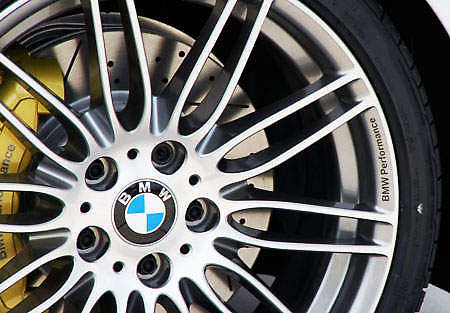
Now this is a sight that you seriously won’t see often – an E90 Sedan with almost the full range of BMW Performance add-ons installed. And I say this because the total cost of the full kit clocks in at RM103,300, which is what you’ll have to pay over what it costs to buy a 325i in the first place, which is over RM300k.
So that’s over RM400k, which is actually still not enough for a 335i since that twin-turbo baby in BMW Individual trim goes for over half a million bucks.
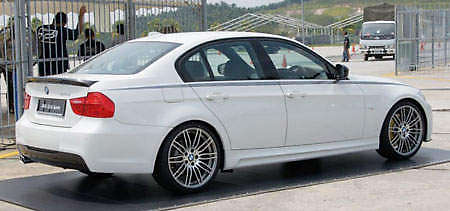
Here’s what went into this car, all from BMW Performance:
- Carbon fiber mirror caps
- Carbon fiber diffuser for M Aerodynamic kit
- Carbon fiber front splitter for M Aerodynamic kit
- Carbon fiber rear spoiler
- Carbon fiber suspension cross-brace
- Double spoke style 269 alloy wheels
- BMW Performance brakes (with the yellow calipers)
- BMW Performance air intake
- Carbon finer interior trim
- Illuminated door entry strips
- Sports steering wheel with shift indicator
 When I say almost the full range – it’s because it looks like the BMW Performance front bumper is installed but not the BMW Performance rear bumper which has a different design. However both M Aerodynamic rear bumper and BMW Performance rear bumper have carbon fiber diffusers available. You have a new intake but the BMW Performance exhaust system also seems to be missing.
When I say almost the full range – it’s because it looks like the BMW Performance front bumper is installed but not the BMW Performance rear bumper which has a different design. However both M Aerodynamic rear bumper and BMW Performance rear bumper have carbon fiber diffusers available. You have a new intake but the BMW Performance exhaust system also seems to be missing.
These parts are all seriously expensive for stuff that don’t really add any performance to your car, except for those brakes. The wheels alone cost RM15,888 for the style 269 19 inchers while the style 313 costs more at RM16,888. They come with staggered run-flat tyres – 225/35R19 in front and 255/30R19 at the rear.
The interior trim package costs RM7,888, the carbon fiber exterior bits package costs RM10,888 and the BMW Performance front and rear bumper and skirts cost RM8,888. And these are just the parts that come with ‘package prices’ . I don’t have the prices for stuff like the upgraded brakes and sports steering wheel with shift lights. But BMW says everything that’s on the car you see in this post cost RM103,300!
Audi A8 Hybrid – the limo that won’t cost the earth
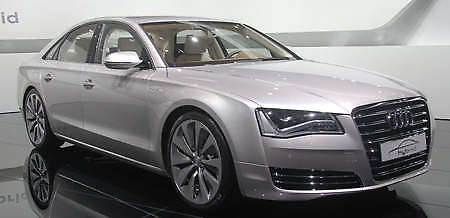
TheAudi A8 is the newest limo on the block and this is the A8 hybrid which aims to be the greenest in the segment. Shown at the Geneva show for the first time, the A8 hybrid’s drivetrain consists of two propulsion units – a 2.0 TFSI internal combustion engine and an electric motor – that develop a total output of 245 bhp and 480 Nm of torque. This enables a 7.6-second 0-100 km/h time and a top speed of 235 km/h, done in Transporter style coolness.
A hydraulically operated wet clutch links the TFSI with the electric motor (with 45 bhp and 211 Nm), which makes available its grunt from standstill. In the boot lies the Audi’s lithium-ion battery pack, which still leaves 400 litres of luggage space. Subsystems that operate on engine power in a regular car have been modified to run entirely on electric power in the A8 hybrid, such as the air-con compressor, electromechanical steering system and brake booster, all managed by a “pulse control inverter” system. All these will appear in the Audi Q5 hybrid, to be introduced later this year.
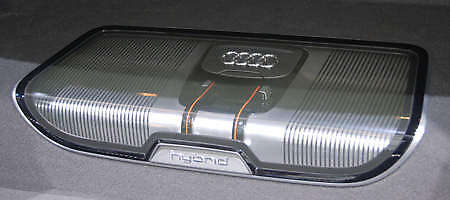
This A8 is capable of fully electric-powered driving up to 65 km/h and for a distance “exceeding 2 km”. Normally, both work in tandem but above 65 km/h, the combustion engine propels the car alone, while the electric motor supplies ancillaries and recharges the battery. The TFSI is disconnected from the drivetrain when the driver chooses to coast. The e-motor also functions as a generator to recoup energy from braking and replenish the battery.
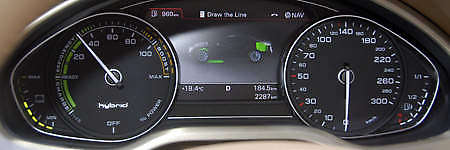
Green credentials? The A8 hybrid’s average fuel consumption is 16.1 km/l while CO2 emissions is 144 grams per km. These figures compare very well with the Mercedes-Benz S400 Hybrid, which does 12.7 km/l and 186 g/km. Launched last year, the car from Stuttgart pairs a V6 with electric motors for a combined 299 bhp/385 Nm, and was the first production hybrid to use lithium ion batteries
Monday, March 8, 2010
Hear the Aston Martin One-77’s V12 howl!
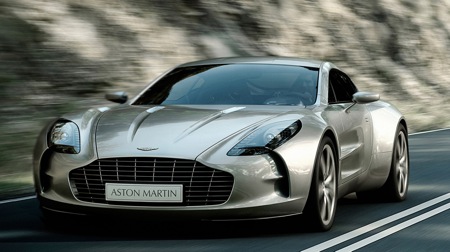
I don’t know about you but an Aston Martin has always seemed to be like the more refined and gentlemanly alternative to more hot blooded cars like a Ferrari. I found that appealing. But now Aston Martin has developed a limited edition car with aggressive looks. Under its hood is a monstrous 7.3 litre V12 engine with over 750 bhp. Good thing is thanks to that V12 it has the soundtrack to accompany its looks – check out the video after the jump, which shows the One-77 undergoing some tests ahead of first customer deliveries. Let us know in the comments – are you liking the One-77?





